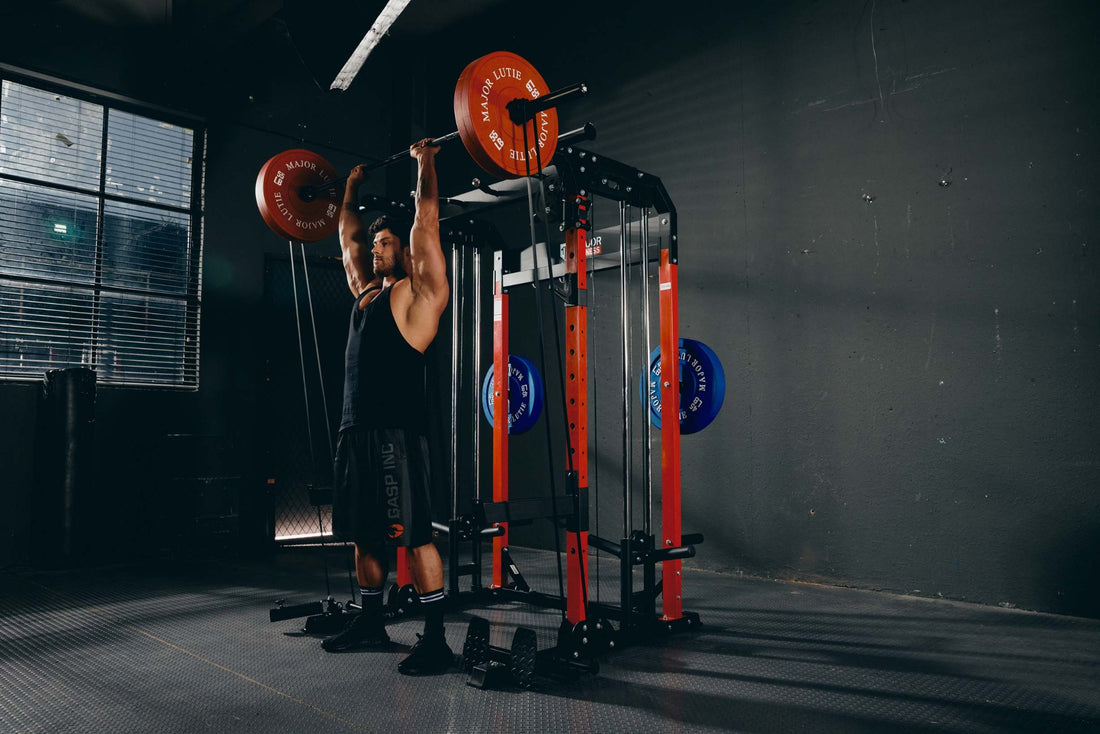
When it comes to building a powerful upper body, few exercises can match the efficacy of the overhead press. But what is a good overhead press, and how can you not only perform it correctly but also make the most out of this fundamental exercise? Let's dive deep into the essentials, exploring everything from techniques to benefits, so you can elevate your fitness game.
Understanding the Overhead Press
The overhead press, often referred to as the shoulder press, is a staple in strength training routines. This exercise primarily targets the deltoid muscles in the shoulders, but also engages the triceps, upper chest, and the core muscles for stability. It's a compound movement, which means it works multiple muscle groups simultaneously.
Benefits of the Overhead Press
- Strength Building: Provides significant strength gains, particularly in the shoulders and arms.
- Improved Posture: Enhances posture by strengthening the upper back and shoulders.
- Functional Fitness: Mimics daily movements and tasks, making you stronger for everyday activities.
- Joint Health: Promotes shoulder joint stability and overall joint health.
What Defines a Good Overhead Press?
A good overhead press is characterized by proper form, appropriate weight, and consistent progress. Here's a breakdown of each aspect:
Proper Form
Executing the overhead press with the correct technique ensures maximum benefit and minimizes the risk of injury. Follow these steps:
- Starting Position: Stand with your feet shoulder-width apart, holding the barbell at shoulder height with a firm grip, palms facing forward.
- Bracing: Engage your core muscles and tighten your glutes for stability.
- Pressing Motion: Push the barbell upward in a straight line until your arms are fully extended, ensuring you do not arch your back.
- Lowering: Slowly lower the barbell back to the starting position with control.
- Breathing: Exhale while pressing the barbell up and inhale as you lower it.
Appropriate Weight
Determining the right weight for your overhead press is crucial. Too heavy, and you risk injury; too light, and you won't challenge your muscles sufficiently. A good rule of thumb is to start with a weight that allows you to perform 3-4 sets of 8-12 repetitions with good form.
Consistent Progress
Consistency is key in any strength training program. Gradually increase the weight as you become stronger, aiming for small increments to allow your muscles and joints to adapt. Tracking your progress over time will help you set realistic goals and stay motivated.

Common Mistakes to Avoid
Even experienced lifters can fall into bad habits. Avoid these common mistakes to ensure a good overhead press:
- Arching the Back: Overarching can lead to spinal injuries. Always engage your core and glutes.
- Improper Grip: Too wide or too narrow a grip can affect the mechanics of the press. Aim for a shoulder-width grip.
- Neglecting Warm-Up: Always warm up your shoulders and arms with light exercises or stretches before attempting heavy lifts.
- Rushing the Reps: Control the movement, ensuring a steady and deliberate pace.
Advanced Overhead Press Variations
Once you're comfortable with the standard overhead press, try these variations to challenge your muscles in new ways:
- Seated Overhead Press: Performed seated to isolate shoulder muscles, reducing lower body involvement.
- Dumbbell Overhead Press: Utilizes dumbbells for a greater range of motion and improved muscle balance.
- Push Press: Incorporates a slight leg drive to help press heavier weights.
- Single-Arm Overhead Press: Focuses on one side at a time, enhancing unilateral strength and stability.
Integrating the Overhead Press into Your Routine
For balanced muscle development, incorporate the overhead press into a comprehensive workout plan. Here's a sample routine:
- Monday - Upper Body: Bench Press, Overhead Press, Rows, Bicep Curls.
- Wednesday - Lower Body: Squats, Deadlifts, Leg Press, Calf Raises.
- Friday - Full Body: Deadlifts, Overhead Press, Pull-Ups, Dips, Lunges.
Conclusion
So what is a good overhead press? It's one that is performed with proper form, appropriate weight, and steady progression. By understanding the mechanics, benefits, and common pitfalls of the overhead press, you can make this powerhouse exercise a cornerstone of your strength training regimen. Whether you're a beginner or an advanced lifter, mastering the overhead press can lead to impressive gains in upper body strength and overall fitness.





















